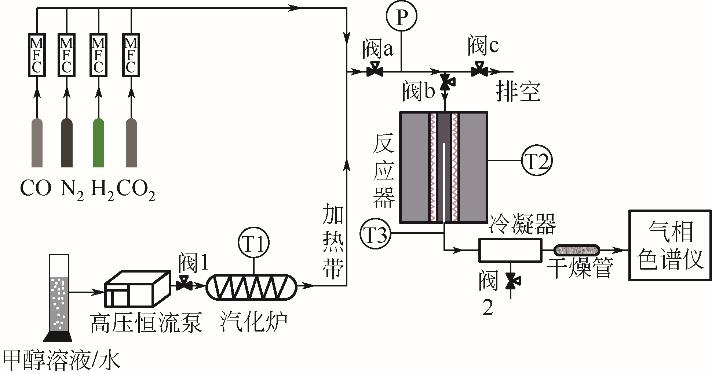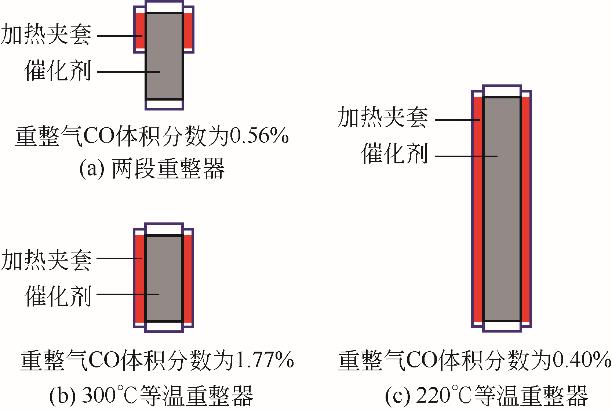| 1 |
陈云. 全球气候变化背景下“双碳”战略与经济发展对立论的批判及其重构[J]. 当代经济管理, 2023, 45(2): 17-24.
|
|
CHEN Yun. Criticism and reconstruction of the opposite theory of dual carbon strategy and economic development in the context of global climate change[J]. Contemporary Economic Management, 2023, 45(2): 17-24.
|
| 2 |
李高. 凝聚全社会力量 推进碳达峰目标实现[J]. 环境与可持续发展, 2021, 46(2): 6-10.
|
|
LI Gao. To push forward the carbon dioxide emission peaking goal by concentrating the power of the whole society[J]. Environment and Sustainable Development, 2021, 46(2): 6-10.
|
| 3 |
张伟, 向洪坤. 燃料电池汽车基本技术及发展综述[J]. 智慧电力, 2020, 48(4): 36-41, 96.
|
|
ZHANG Wei, XIANG Hongkun. Review on basic technology and development of fuel cell vehicle[J]. Smart Power, 2020, 48(4): 36-41, 96.
|
| 4 |
李金晟, 葛君杰, 刘长鹏, 等. 燃料电池高温质子交换膜研究进展[J]. 化工进展, 2021, 40(9): 4894-4903.
|
|
LI Jinsheng, GE Junjie, LIU Changpeng, et al. Review on high temperature proton exchange membranes for fuel cell[J]. Chemical Industry and Engineering Progress, 2021, 40(9): 4894-4903.
|
| 5 |
韩利, 李琦, 冷国云, 等. 氢能储存技术最新进展[J]. 化工进展, 2022, 41(S1): 108-117.
|
|
HAN Li, LI Qi, LENG Guoyun, et al. Latest research progress of hydrogen energy storage technology[J]. Chemical Industry and Engineering Progress, 2022, 41(S1): 108-117.
|
| 6 |
姜召, 徐杰, 方涛. 新型有机液体储氢技术现状与展望[J]. 化工进展, 2012, 31(S1): 315-322.
|
|
JIANG Zhao, XU Jie, FANG Tao. Current situation and prospect for hydrogen storage technology with new organic liquid[J]. Chemical Industry and Engineering Progress, 2012, 31(S1): 315-322.
|
| 7 |
程思番, 任鹏超, 田芸, 等. Cu/MgO催化剂中Cu与MgO协同作用对合成气加氢制甲醇性能的影响[J]. 低碳化学与化工, 2022, 47(1): 44-50, 114.
|
|
CHENG Sifan, REN Pengchao, TIAN Yun, et al. Effect of synergistic effect of Cu and MgO in Cu/MgO catalyst on performance of syngas hydrogenation to methanol[J]. Low-carbon Chemistry and Chemical Engineering, 2022, 47(1): 44-50, 114.
|
| 8 |
PHIL De Luna, CHRISTOPHER Hahn, DREW Higgins, et al. What would it take for renewably powered electrosynthesis to displace petrochemical processes?[J]. Science, 2019, 364(6438): eaav3506.
|
| 9 |
李洪亮, 潘哆吉, 马维清. 甲醇裂解制氢纯度控制与影响因素[J]. 化工管理, 2020(33): 128-129, 133.
|
|
LI Hongliang, PAN Duoji, MA Weiqing. Purity control and influencing factors of hydrogen production from methanol cracking[J]. Chemical Management, 2020(33): 128-129, 133.
|
| 10 |
赵萱. 甲醇自热重整制氢系统的研究[J]. 低温与特气, 2012, 30(5): 13-16.
|
|
ZHAO Xuan. Methanol self-heating reforming hydrogen production system research[J]. Low Temperature and Specialty Gases, 2012, 30(5): 13-16.
|
| 11 |
PALO Daniel, DANGLE Robert, HOLLADAY Jamelyn. Methanol steam reforming for hydrogen production[J]. Chemical Reviews, 2007, 107(10): 3992-4021.
|
| 12 |
QI Aidu, PEPPLEY Brant, KARAN Kunal. Integrated fuel processors for fuel cell application: a review[J]. Fuel Processing Technology, 2007, 88(1): 3-22.
|
| 13 |
张磊, 潘立卫, 倪长军, 等. CuO/ZnO/CeO2/ZrO2催化剂上甲醇水蒸气重整制氢反应机理研究[J]. 大连理工大学学报, 2014, 54(1): 13-19.
|
|
ZHANG Lei, PAN Liwei, NI Changjun, et al. Research on mechanism of methanol steam reforming for hydrogen-making over CuO/ZnO/CeO2/ZrO2 catalyst[J]. Journal of Dalian University of Technology, 2014, 54(1): 13-19.
|
| 14 |
ZHANG Xinrong, SHI Pengfei. Production of hydrogen by steam reforming of methanol on CeO2 promoted Cu/Al2O3 catalysts[J]. Molecular Catalysis, 2003, 194(1/2): 99-105.
|
| 15 |
SHOKRANI Reza, HAGHIGHI Mohammad, JODEIRI Naeimeh, et al. Fuel cell grade hydrogen production via methanol steam reforming over CuO/ZnO/Al2O3 nanocatalyst with various oxide ratios synthesized via urea-nitrates combustion method[J]. International Journal of Hydrogen Energy, 2014, 39(25) : 13141-13155.
|
| 16 |
郭凌颖, 赵佳林, 钱凡悦, 等. 甲醇重整制氢PEMFC系统余热分析[J]. 电源技术, 2017, 41(3): 392-394.
|
|
GUO Lingying, ZHAO Jialin, QIAN Fanyue, et al. Thermal analysis of methanol reforming proton exchange membrane fuel cell system[J]. Chinese Journal of Power Sources, 2017, 41(3): 392-394.
|
| 17 |
胡君怡. 甲醇重整制氢-PEMFC冷热电联供分布式能源系统热经济分析[D]. 广州: 广东工业大学, 2022.
|
|
HU Junyi. Thermo-economic analysis of methanol reforming hydrogen production-PEMFC distributed energy system for combined cooling- heating-power generation[D]. Guangzhou: Guangdong University of Technology, 2022.
|
| 18 |
向华. 基于甲醇水重整制氢系统的余气换热助燃系统及方法: CN104860264B[P]. 2017-01-25.
|
|
XIANG Hua. Waste gas heat transfer combustion system and method based on methanol steam reforming to hydrogen system: CN104860264B[P]. 2017-01-25.
|
| 19 |
李昊, 程健, 张瑞云, 等. 一种直接利用甲醇重整气的燃料电池系统: CN214411262U[P]. 2021-10-15.
|
|
LI Hao, CHENG Jian, ZHANG Ruiyun, et al. A fuel cell system that uses methanol reforming gas directly: CN214411262U[P]. 2021-10-15.
|
 ), 李永胜1, 罗春欢1,2(
), 李永胜1, 罗春欢1,2( ), 苏庆泉1,2(
), 苏庆泉1,2( )
)
 ), LI Yongsheng1, LUO Chunhuan1,2(
), LI Yongsheng1, LUO Chunhuan1,2( ), SU Qingquan1,2(
), SU Qingquan1,2( )
)






